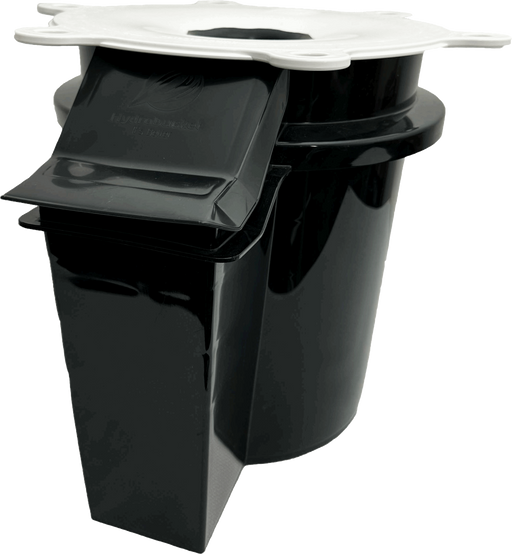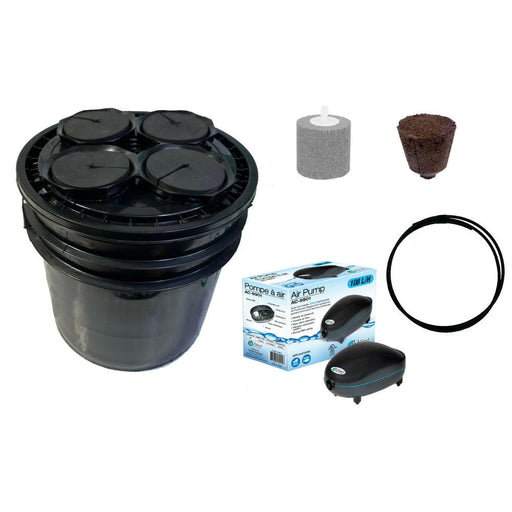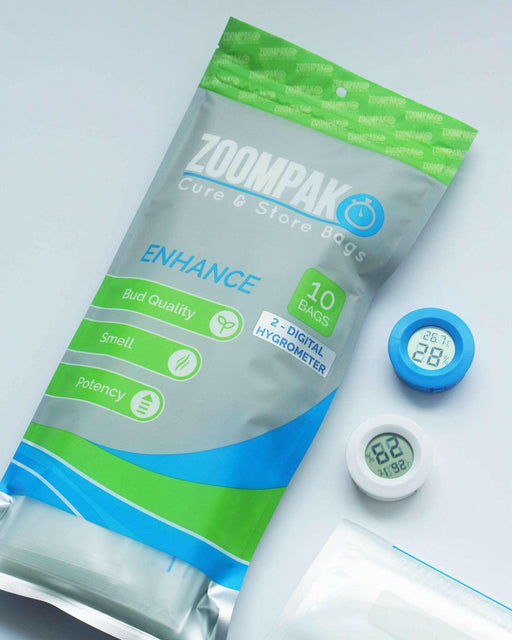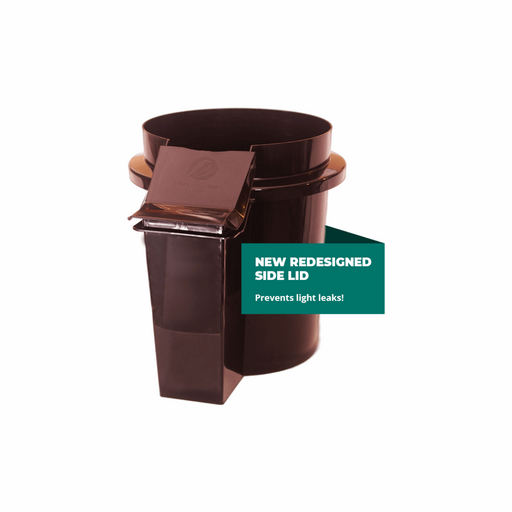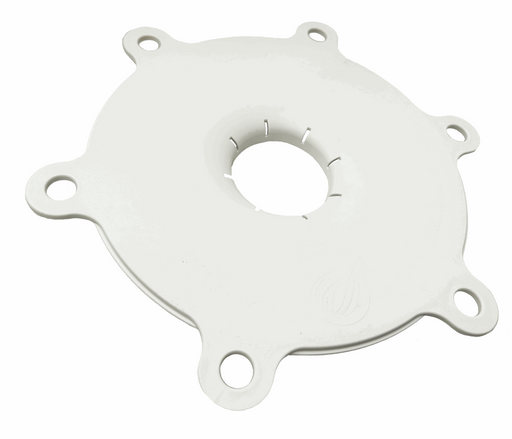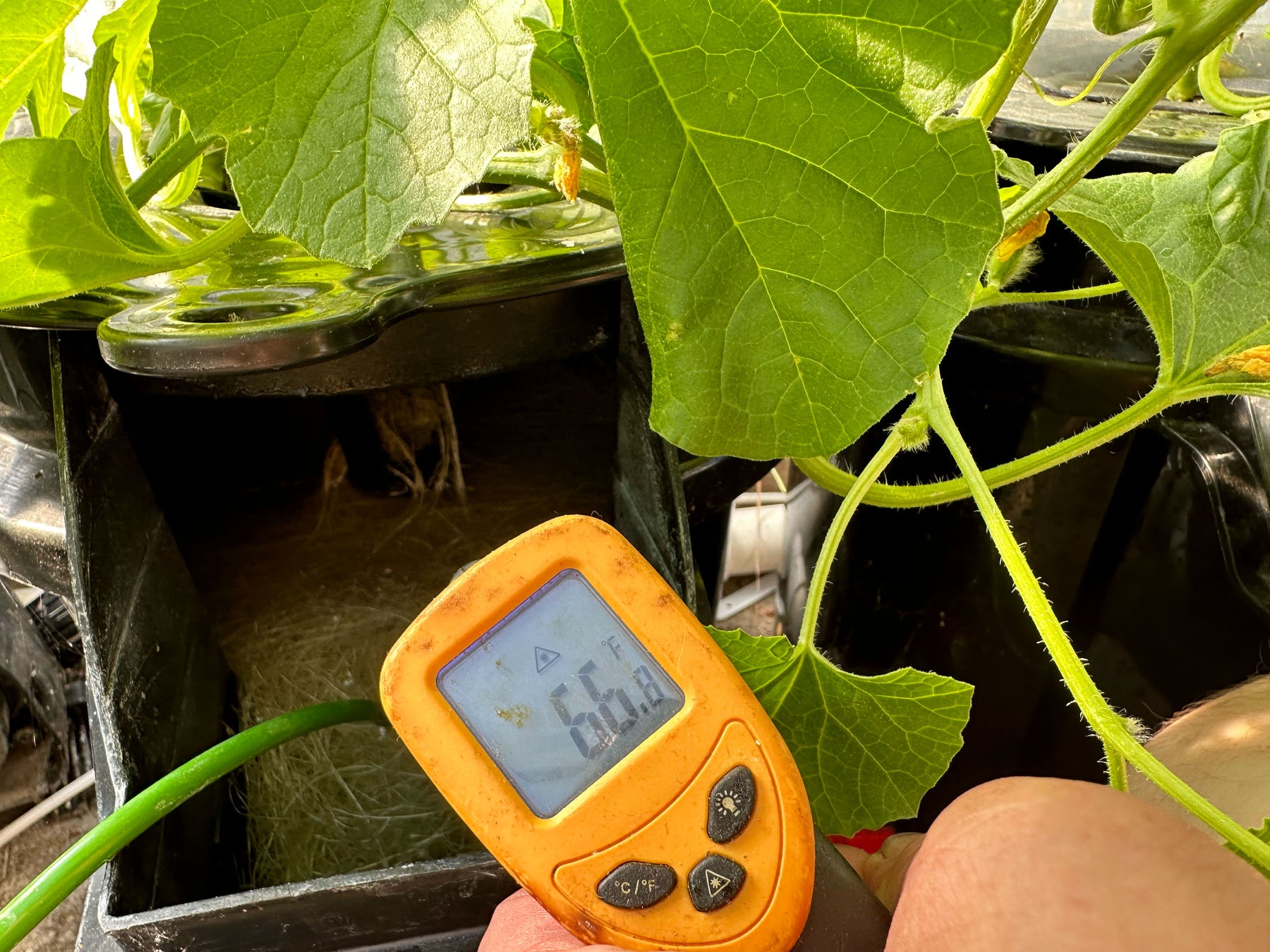
Keeping DWC Buckets Cool
How to Manage Temperature in DWC Buckets
Keeping DWC buckets cool in hotter environments helps ensure maximum growth rates and production from your hydroponic crops. Roots can tolerate warmer temperatures, especially if maintaining a clean hydroponic nutrient solution. However, the optimal temperature range in the DWC nutrient solution for most crops is typically 65 to 75 deg F. So, if the air temperature in the growing environment is considerably warmer, temperatures may rise past optimal in the root zone.
Why is Keeping DWC Roots Cool Important?
There is a very direct relationship between Dissolved Oxygen (DO) levels in water and temperature. In most basic terms, as the water temperature rises, the less oxygen it can hold. Oxygen is important for plant roots—that’s why plants can grow bigger and faster in DWC hydroponics: aeration from air pumps at the roots increases dissolved oxygen! However, this ability is diminished when the water gets too warm. If fast growing plants begin to lack oxygen at the roots, growth can slow or in severe cases root health may begin to suffer, inviting problems like root rot.
NOTE: there is always a trade-off; if you keep roots too cool in hopes to drive up oxygen levels, growth may suffer because warm temperatures stimulate the plants metabolic rate; cold temperatures slow it down. It’s a bout a healthy balance, that’s why 65 to 75 deg F is considered a good range for most crops.

How Can I Keep My DWC Buckets Cool if it’s Too Hot?
There’s a few things you can do to help keep DWC root systems happier in warm growing environments.
If growing indoors under grow lights managing your lighting carefully can have a significant impact on root temperatures in the growing environment. Firstly, LED grow lights tend to run cooler than HID light sources as they require less wattage to produce usable light for crop growth. This can help a lot. Additionally, many light sources can run a dimmer or selectable wattage outputs. So cut back on light intensity. Super bright light will only hurt growth and stress plants if other conditions are not optimal.
Keeping DWC roots cool outdoors can also be a challenge. Usually, the nutrient solution cools back down at night, creating a healthy average root temperature. However, placing your DWC buckets will they will get morning to early afternoon sun will give plants plenty of light for growth while avoiding direct prolonged exposure to heat through the hottest part of the day. If location isn’t an option, specialty shade cloth fabrics are available in a range of shading factors to help cut down on the amount of direct light the garden receives. 65% shade cloth is usually great in most application (this blocks out 35% of the overall light intensity)
Placing a plastic frozen water bottle inside DWC buckets is a great way to cool down the nutrient solution through the hottest part of the day–just put it back in the freezer at the end of the day so it’s ready for use the following day.
Indoors, a room air conditioner may be required in summer months when growing indoors. However, sometimes by running the lights at night exhaust fans may still be effective depending on the surrounding environment. Usually, even with good ventilation, you should expect a 10 to 15 deg F increase in air temperature when operating grow lights.
Wrapping an insulative layer around your DWC buckets can be effective too, ie reflective bubble wrap. This helps intense light from heating the solution up as quickly. Remember that roots will usually have a chance to cool off during the dark cycle, so the slower they heat back up when it's warm and bright out again, the better.
Maintaining a clean root zone is always a good idea, and it especially pays to do so in warmer conditions. Avoid organic materials as they are subject to decomposition which can create infections or unwanted microbial blooms in the root zone. Using Hydroponic Fertilizers with additions of Hypochlorous Acid not only gives roots access to the perfect balance of minerals for uninterrupted growth; it also helps to ensure a stable chemistry in the root zone that is less subject to microbial related issues that can stimulate root disease in warmer environments.
Start Indoor Growing Today!
-
HydroCombo
Visionary HydroponicsOriginal price $84.50Original price $84.50 - Original price $84.50Original price $84.50Current price $67.60$67.60 - $67.60Current price $67.60Maximize your hydroponic gardening efficiency with the HydroCombo, an all-in-one solution for your Deep Water Culture needs. This high-quality comb...
View full detailsOriginal price $84.50Original price $84.50 - Original price $84.50Original price $84.50Current price $67.60$67.60 - $67.60Current price $67.60Sold out -
HydroSeed
Visionary HydroponicsOriginal price $62.98Original price $62.98 - Original price $62.98Original price $62.98Current price $50.38$50.38 - $50.38Current price $50.38Simplify Starting Your Hydroponics Seedlings Introducing the HydroSeed, our all-in-one solution to go from seed to harvest effortlessly, and cultiv...
View full detailsOriginal price $62.98Original price $62.98 - Original price $62.98Original price $62.98Current price $50.38$50.38 - $50.38Current price $50.38Save 20% -
ZoomPak Cure & Store 1/2lb Bags
Visionary HydroponicsOriginal price $39.96Original price $39.96 - Original price $39.96Original price $39.96Current price $31.97$31.97 - $31.97Current price $31.97ZoomPak Cure & Store 1/2lb Bags - 10 Pack The ZoomPak Cure & Store Bags are designed for the discerning horticulturist seeking to pre...
View full detailsOriginal price $39.96Original price $39.96 - Original price $39.96Original price $39.96Current price $31.97$31.97 - $31.97Current price $31.97Save 20% -
HydroBucket
Visionary HydroponicsOriginal price $39.74Original price $39.74 - Original price $39.74Original price $39.74Current price $31.79$31.79 - $31.79Current price $31.79HydroBucket is the answer to your Deep Water Culture hydroponics needs.It streamlines your home growing experience, allowing you to focus on nurtur...
View full detailsOriginal price $39.74Original price $39.74 - Original price $39.74Original price $39.74Current price $31.79$31.79 - $31.79Current price $31.79Sold out -
HydroLid
Visionary HydroponicsOriginal price $35.95Original price $35.95 - Original price $35.95Original price $35.95Current price $28.76$28.76 - $28.76Current price $28.76Premium Quality Hydroponic Lid for Optimal Fluid Movement and Plant Support The HydroLid is your essential tool for achieving optimal hydroponic gr...
View full detailsOriginal price $35.95Original price $35.95 - Original price $35.95Original price $35.95Current price $28.76$28.76 - $28.76Current price $28.76Sold out

